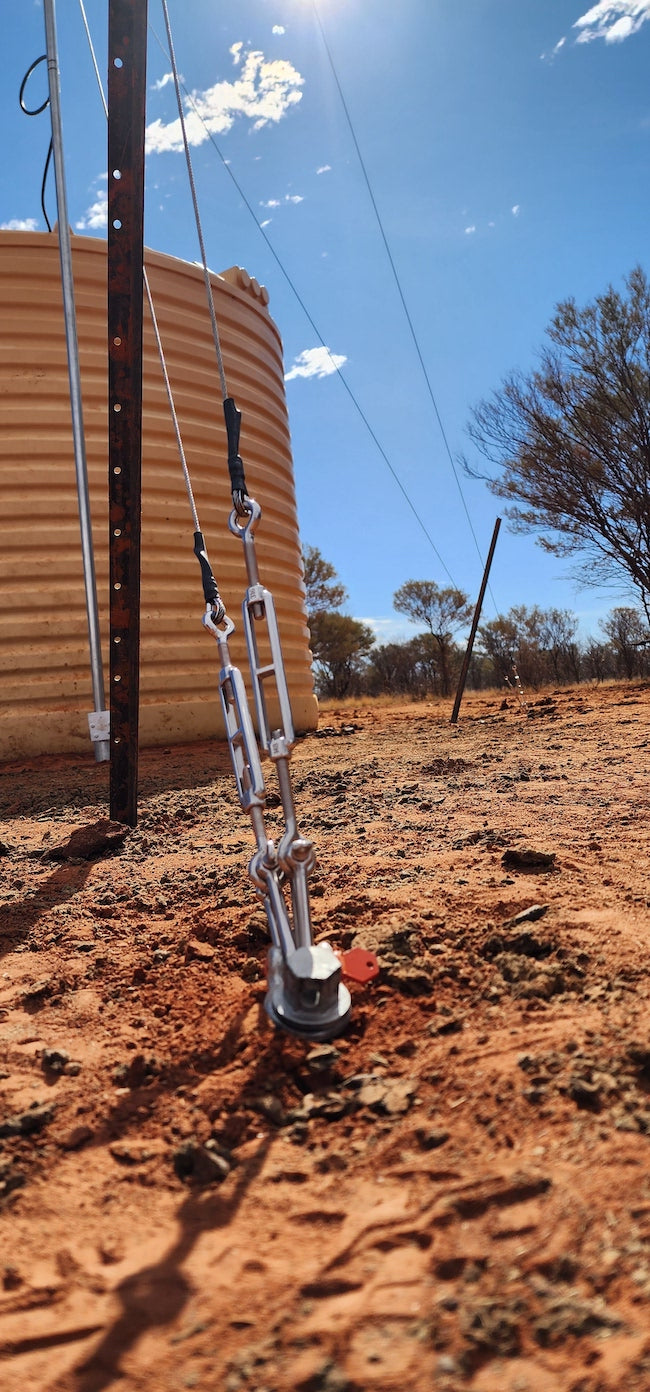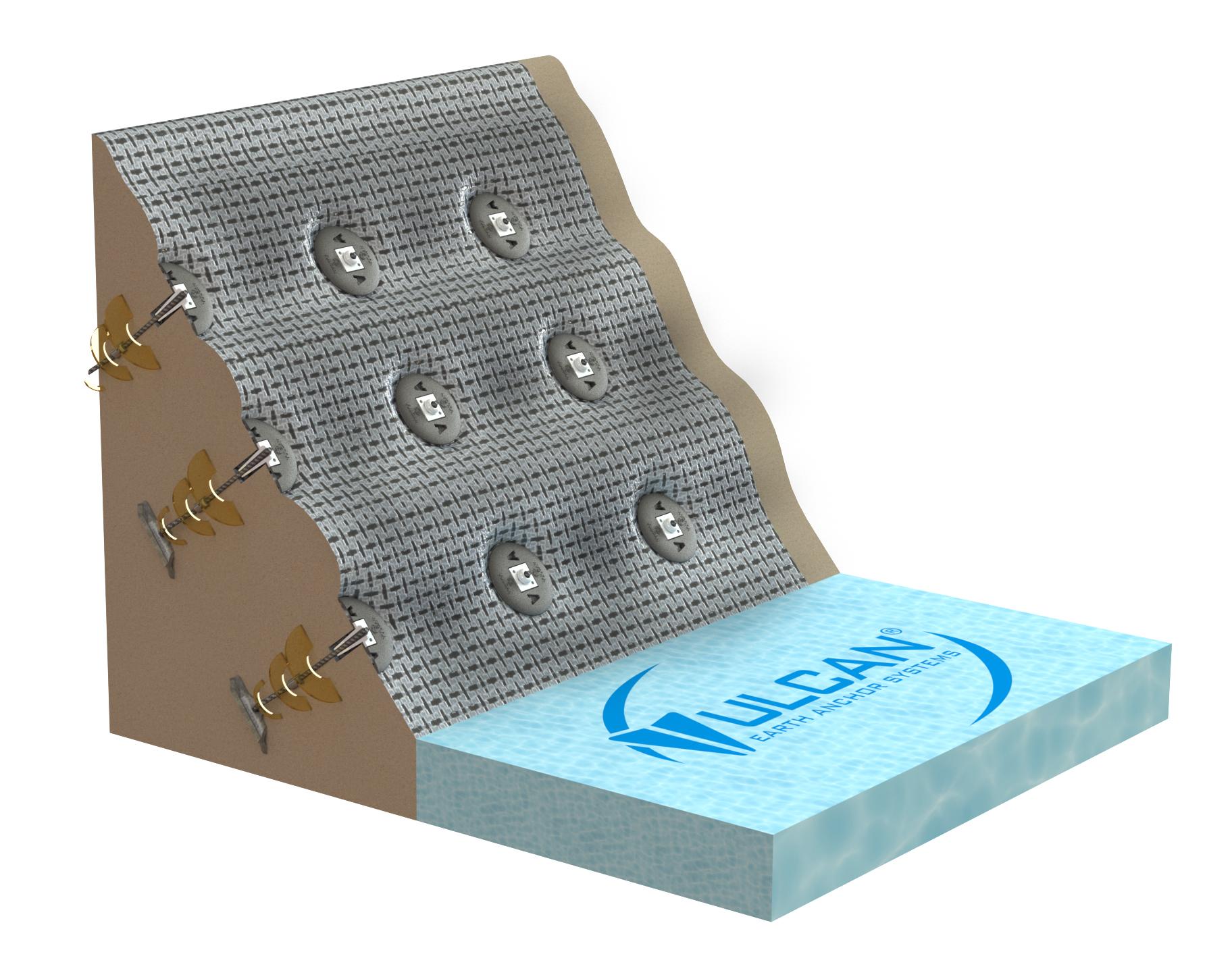How Heavy-Duty Earth Anchors Job: A Comprehensive Guide to Dirt Anchoring Solutions
Durable Earth anchors play an essential function in offering security and support in various building and construction applications. By embedding deeply into the ground, they withstand upright and lateral pressures successfully. Various kinds of supports deal with various soil problems, making them versatile. Recognizing their mechanics and setup strategies is vital for making best use of efficiency. What elements affect their efficiency, and just how do they contrast to traditional approaches? The answers may stun you.
Understanding Heavy-Duty Earth Anchors
Durable Earth anchors act as essential parts in various building and landscaping jobs, supplying stability and support in tough soil conditions. These anchors function by being installed right into the ground, where they stand up to lateral and vertical forces. Their design allows for safe add-on to frameworks, guaranteeing they continue to be secured against soil movement or external loads.The effectiveness of durable Earth supports largely depends on the type of soil and the support's setup deepness. Proper installment strategies are crucial, as they figure out the support's holding capacity. Ecological variables, such as dampness and freeze-thaw cycles, can likewise affect performance.These supports are often used in applications varying from protecting fences and retaining wall surfaces to supporting temporary structures throughout damaging weather conditions. Understanding the principles behind heavy-duty Earth supports is essential for professionals looking for to boost the longevity and safety of their tasks.
Kinds of Heavy-Duty Earth Anchors
Different types of heavy-duty Earth supports are made to fulfill particular requirements based upon dirt conditions and project demands. Helical supports, including screw-like blades, work in softer soils, offering high lots abilities and very easy installment. Driven supports, which are inculcated the ground, appropriate for rough surfaces and provide immediate load support. Tie-back supports are commonly made use of in keeping wall applications, enabling side assistance by anchoring right into the ground at an angle. One more kind is the cast-in-place support, ideal for concrete applications, as they are integrated into structures for enhanced security. Finally, dirt screw supports are functional alternatives that can be used in different dirt types, giving trusted tension and compression capacities. Each type serves distinct applications, making sure security and safety and security in building and construction and landscaping projects. Understanding these alternatives permits educated decisions in choosing the appropriate Earth securing option.
The Mechanics of Dirt Anchoring

Comprehending the auto mechanics of dirt anchoring requires an examination of various types of Earth supports and their setup methods. Each support kind provides distinct features that affect its performance in different dirt problems. Correct setup techniques are necessary for optimizing the securing system's security and efficiency.
Kinds of Earth Anchors
Earth supports, crucial elements in dirt anchoring systems, come in a number of kinds, each created for particular applications and soil conditions. One of the most typical kinds include screw anchors, which are turned right into the ground, supplying solid side resistance. Helical supports include blades that permit effective setup in various dirt types, making them suitable for both permanent and momentary applications. Driven anchors, typically made from steel, are hammered into the dirt and are effective in thick or rocky atmospheres. Auger supports utilize a helical layout to facilitate installment in softer dirts. Plate supports consist of a flat plate buried flat, dispersing tons over a bigger area, suitable for applications needing high load abilities in cohesive soils.
Installment Methods Explained
Proper installation methods are essential for the efficiency of dirt anchoring systems. The procedure typically starts with site assessment, validating the selected area can sustain the support's tons. After establishing the right support type, appropriate opening depth and angle should be developed. The setup involves driving the support right into the ground utilizing specialized equipment, such as hydraulic or hands-on vehicle drivers, to accomplish best embedment. Post-installation, tensioning the support is vital to guarantee security; this is often validated with tons screening. In addition, surrounding soil conditions need to be kept track of to avoid displacement. Adhering to these techniques not only improves the support's performance yet likewise lengthens its life-span, supplying trustworthy assistance for various applications.
Applications of Heavy-Duty Earth Anchors
While durable Earth anchors are typically connected with building and landscaping, their adaptability reaches a variety of applications throughout different industries. In civil engineering, they supply important assistance for preserving wall surfaces, ensuring security in areas prone to soil disintegration. The aquatic market makes use of these anchors for safeguarding docks and marinas, preventing movement caused by tides and currents. Additionally, in the telecommunications industry, heavy-duty Earth anchors are significant for stabilizing cell towers and other high structures against wind forces. Agricultural applications also profit, as these anchors can protect structures like greenhouses and livestock fencing, ensuring they stand up to extreme weather condition conditions. Furthermore, in sustainable power jobs, such as wind farms, Earth anchors play an essential role in protecting wind turbine foundations, enhancing general safety and efficiency. This wide series of applications highlights the flexibility and integrity of durable Earth anchors throughout various areas.
Benefits Over Conventional Anchoring Methods
Conventional anchoring methods have long been counted upon for stability, sturdy Earth anchors use significant advantages that improve performance and efficiency. One significant benefit is their premium load-bearing capability, which allows them to withstand higher forces without failure. This toughness makes them perfect for requiring applications, such as in building and construction and energy installations.Additionally, sturdy Earth anchors are created for deeper installation, supplying better stability in different soil problems, consisting of sandy or loose dirts. Their resistance to corrosion and ecological variables guarantees a much longer lifespan and reduced maintenance expenses contrasted to traditional methods.Moreover, these supports can be installed with minimal disturbance to the surrounding area, protecting the integrity of the landscape. In general, durable Earth supports offer a efficient and trusted solution for securing demands, surpassing the restrictions often connected with traditional anchoring techniques.
Installation Process and Best Practices
The installment procedure for dirt securing remedies starts with thorough prep work and site analysis to guarantee peak efficiency. Following this, a detailed installment guide offers clear instructions for efficient implementation (tensile load anchors). Sticking to This Site these ideal techniques is vital for attaining lasting and trustworthy anchoring results
Preparation and Website Evaluation
Effective prep work and extensive site analysis are crucial steps in the installation of dirt anchoring solutions. Prior to installation, the dirt type must be assessed to establish its bearing capability and suitability for securing. Carrying out a geotechnical survey can provide vital info regarding dirt make-up, wetness degrees, and prospective ground activity. Furthermore, determining existing frameworks, greenery, and utilities is important to stay clear of disturbance throughout installment. The location should be removed of particles and challenges to guarantee secure gain access to for equipment. Weather condition problems must also be checked, as unfavorable conditions can affect both security and installation effectiveness. By see this here carefully preparing the site and evaluating all appropriate variables, the possibility of effective support performance is substantially increased.
Step-by-Step Installment Guide
An extensive installment process is essential for achieving perfect performance of soil securing remedies. The installment begins with picking the ideal anchor type and guaranteeing the site is free from debris. Next, appropriate opening positioning is identified based upon tons demands. As soon as the location is established, holes are drilled to the defined depth and diameter making use of the appropriate devices. The support is after that put into the hole, seeing to it it is lined up properly. After safeguarding the anchor, soil is backfilled and compacted to enhance stability. It is important to adhere to producer standards throughout the procedure. A post-installation evaluation validates that the supports are appropriately located and operating as intended, offering reputable support for the intended application.

Upkeep and Examination of Earth Anchors
Regular upkeep and assessment of Earth supports are vital for guaranteeing lasting efficiency and stability. Routine checks allow for the very early detection of problems such as deterioration, loosening up, or dirt motion. Inspectors must search for indicators of corrosion or degradation on the anchor parts, especially at the connection factors. In addition, the surrounding dirt needs to be continue reading this evaluated for disintegration or changes in wetness web content, which can influence anchor effectiveness.It is a good idea to develop a routine assessment routine, preferably a minimum of yearly, relying on ecological conditions. During examinations, all noticeable components should be cleansed to remove dirt or particles that can hide prospective problems. Any kind of indicators of distress, such as turning structures or unusual settling, should motivate immediate analysis. Correct documents of inspections can aid in tracking anchor efficiency in time and promote prompt maintenance actions, ensuring the supports stay practical and reputable.
Frequently Asked Questions
What Materials Are Heavy-Duty Earth Anchors Commonly Made From?
Sturdy Earth anchors are typically built from durable products such as galvanized steel or stainless-steel, ensuring strength and resistance to corrosion. These materials give lasting assistance and security in different soil conditions and applications.
How Do Soil Problems Influence Anchor Efficiency?
Dirt conditions considerably influence anchor performance. Aspects such as dirt type, dampness material, and compaction impact the anchor's grasp and stability, with natural soils typically giving much better resistance than sandy or loose soils, impacting overall efficiency.
Can Heavy-Duty Earth Anchors Be Reused After Removal?
Durable Earth anchors can be reused after elimination, given they are evaluated for damage and wear. Appropriate cleaning and maintenance enhance their long life, guaranteeing effective performance in subsequent setups when problems permit for risk-free reinstallation.
What Are the Ecological Influences of Utilizing Earth Anchors?
The environmental influences of making use of Earth anchors include prospective soil disturbance, interruption of local communities, and feasible contamination of groundwater. Nevertheless, if utilized responsibly, their benefits usually surpass these worries, promoting security in different applications.
Exactly how Do I Choose the Right Anchor for My Project?
